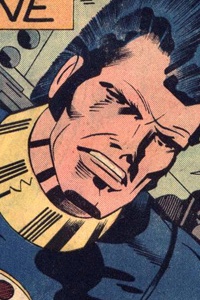Fred Turner, author of From Counterculture to Cyberculture and The Democratic Surround: Multimedia and American Liberalism from World War II to the Psychedelic Sixties interviewed on how Silicon Valley went from counter cultural cool to mustache twirling villain. Turner talks a lot about Silicon Valley’s connection to 60s communalism, and why that outlook is shaping its modern practices:
One of the great mistakes people made in reviewing my book was to say, “Wow, it’s great. Turner finally showed us how the hippies brought us computing.” Nothing could be further from the truth. What I think I did in the book was actually show how the research world that brought us computing also brought us the counterculture. In the ‘40s, we see military industrial research in and around MIT and around a variety of other centers being incredibly collaborative and open. It’s that style that actually migrates into and shapes countercultural practices. What the counterculture does for computing is it legitimates it. It makes it culturally cool. […]
A legacy from the communalist movement that I think is pernicious is a turning away from politics, a turning toward the self as the basis of political change, of social action. I think that’s something you see all through the Valley. The information technology industry feeds off it because information technologies can so easily be aimed at satisfying individual needs. You see that rhetoric leveraged when Google and other firms say, “Don’t regulate us. We need to be creative. We need to be free to pursue our satisfaction because that’s ultimately what will provide a satisfying society.”
That’s all a way of ignoring the systems that make the world possible. One example from the ‘60s that I think is pretty telling is all the road trips. The road trips are always about the heroic actions of people like Ken Kesey and Neal Cassady and their amazing automobiles, right? Never, never did it get told that those road trips were only made possible by Eisenhower’s completion of the highway system. The highway system is never in the story. It’s boring. What’s in the story is the heroic actions of bootstrapped individuals pursuing conscious change. What we see out here now is, again, those heroic stories. And there are real heroes. But the real heroes are operating with automobiles and roads and whole systems of support without which they couldn’t be heroic.
Full Story: Harvard Business Review: How Silicon Valley Became The Man
See also:
The Tyranny of Structurelessness by Jo Freeman
Turner’s essay on the connections between Burning Man and Silicon Valley, particularly Google (PDF)
The R.U. Sirius’ interview with Turner


